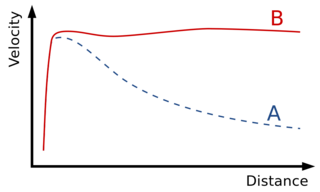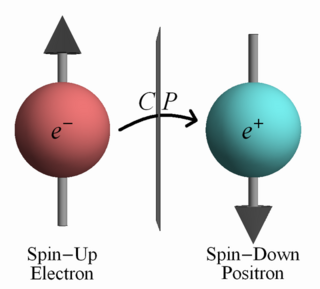The following 2016 Quanta article provides an introduction to axions for a broad audience:

Rotational velocity of stars in a galaxy versus distance from center. Theory predicted Curve A, but Curve B was measured.
Source: Wikimedia Commons
What is Dark Matter?
First theorized by Swiss astronomer Fritz Zwicky in 1933, dark matter is a solution to many inconsistencies between theoretical and experimental results in astrophysics. The strongest of these motivations come from gravitational observations, in which expected mass is much higher than observed mass. In the 1970s, American astronomer Vera Rubin discovered a discrepancy between the predicted and observed motion of galaxies that became known as the Galaxy Rotation Problem, which suggests a great amount of invisible mass is influencing galactic rotations. The Galaxy Rotation Problem, along with calculations from the Cosmic Microwave Background that generally agree, is a key piece of evidence for the existence of dark matter today.
Dark matter doesn’t interact through the electromagnetic force, and is thus “dark”, i.e. unobservable through traditional means. Because dark matter cannot be detected directly, most experiments search for specific theorized particles through model-specific features, such as axions and the Primakoff Effect.
The Standard Model of particle physics describes our current understanding of the building blocks of the universe, but it is unable to explain dark matter. This means we are searching for a particle beyond the standard model.

Source: Xerxes314, CC BY-SA 3.0 , via Wikimedia Commons
Axions
The axion is one potential solution to the question of dark matter.
The Strong CP (charge-parity) Problem is a fine tuning problem arising in the study of the strong force, known as quantum chromodynamics (QCD). Although the Strong force is theoretically predicted to violate CP, it has never been observed doing so. Solving the Strong CP Problem would allow us to understand this unexpected CP conservation.
To address this inconsistency, Peccei and Quinn proposed a field that would change the static CP violating term in the QCD lagrangian to a dynamic variable, replacing the CP-violating term with a CP-conserving field. Particle excitations of this field are known as axions.
In addition to potentially solving the Strong CP Problem, axions are also a promising dark matter candidate. Like dark matter, axions are predicted to interact very weakly with other matter, making them extremely difficult to detect. They have a production mechanism consistent with predicted local densities and virialized velocity for cold dark matter.
Axions’ dominant form of interaction with known matter would be through a coupling of two photons through the Primakov Effect. Dark Matter Haloscopes are searching for axions through a process known as the Inverse Primakov Effect, in which an axion converts into two photons in the presence of a magnetic field.
